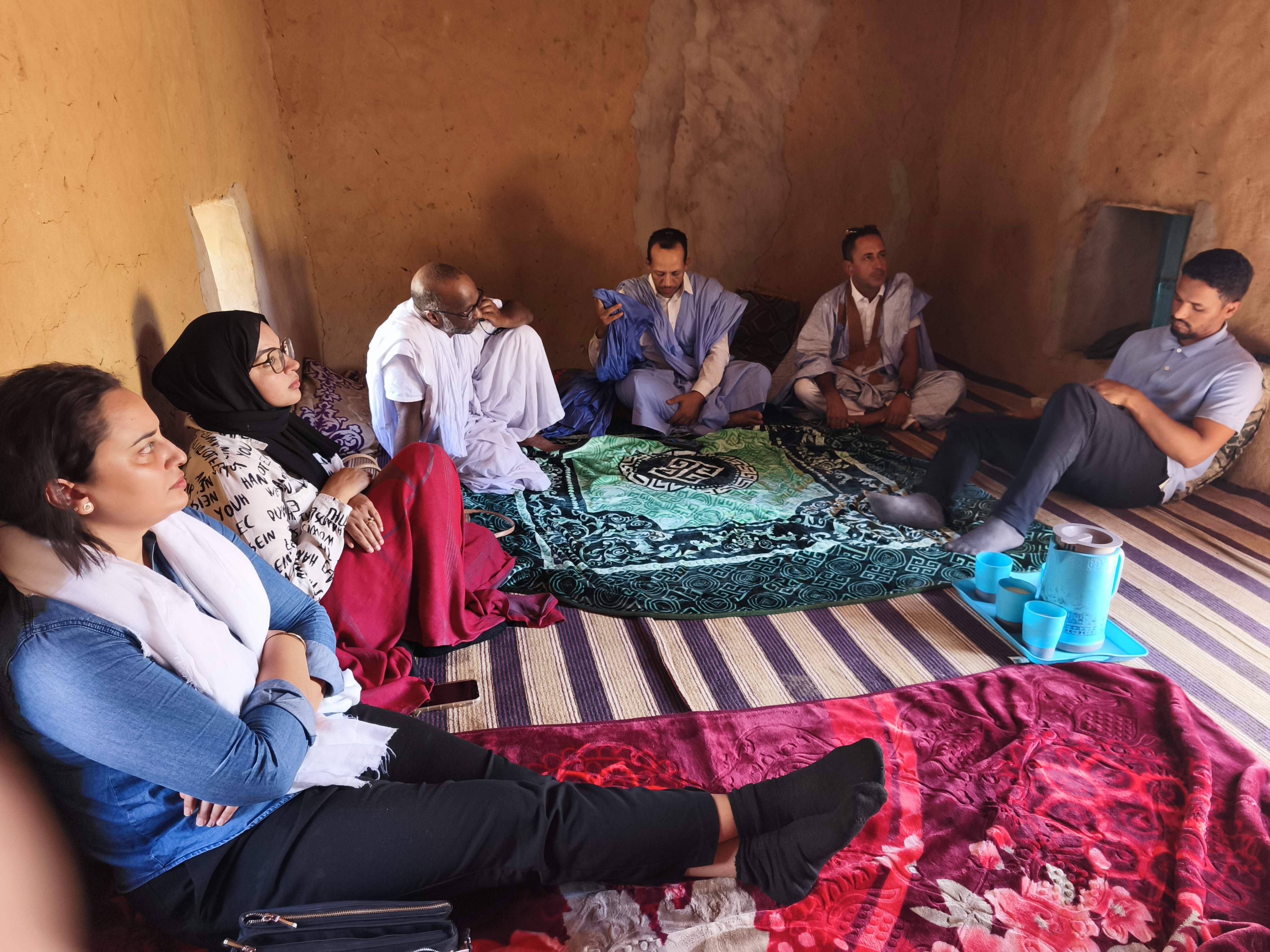

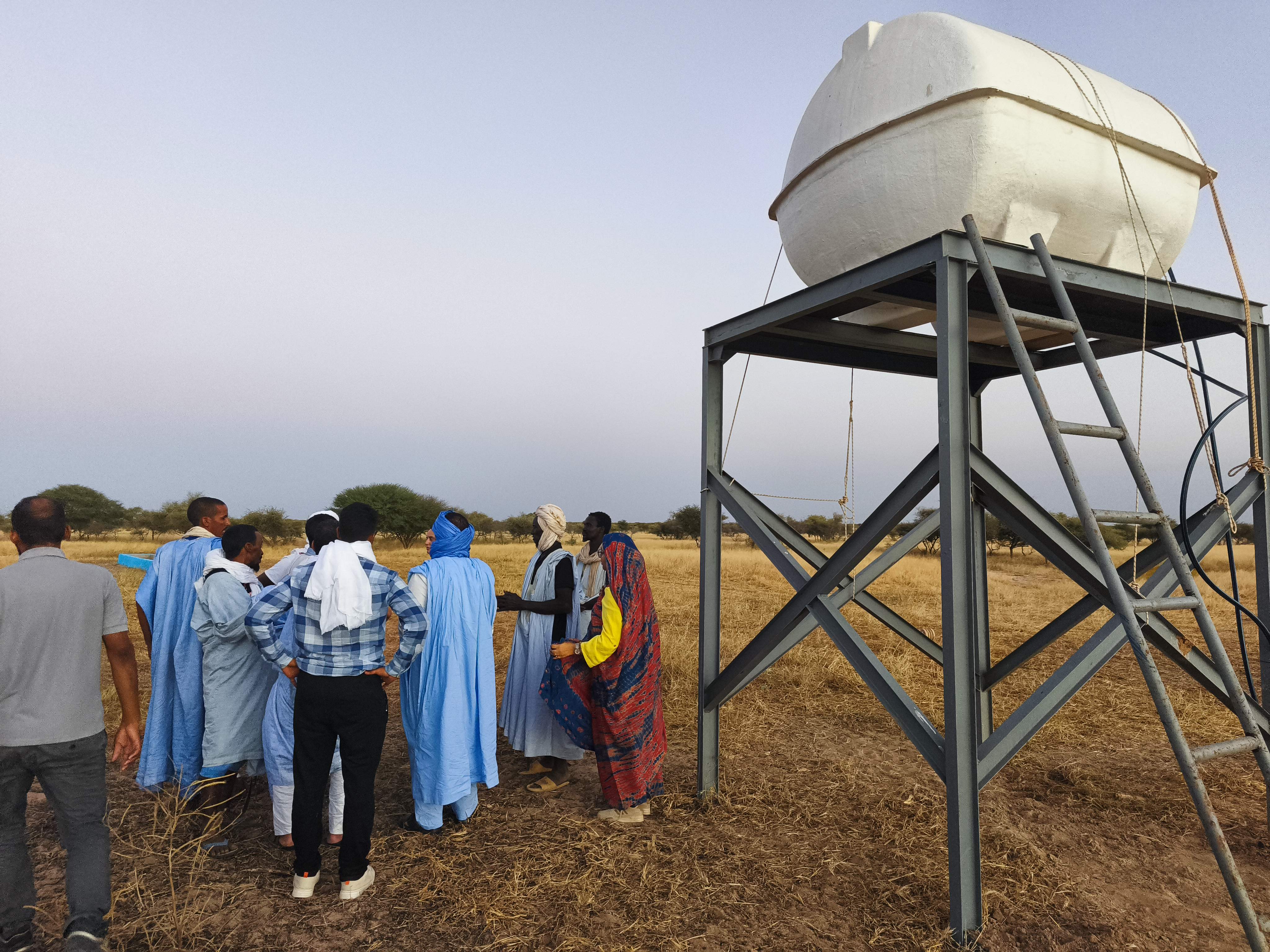
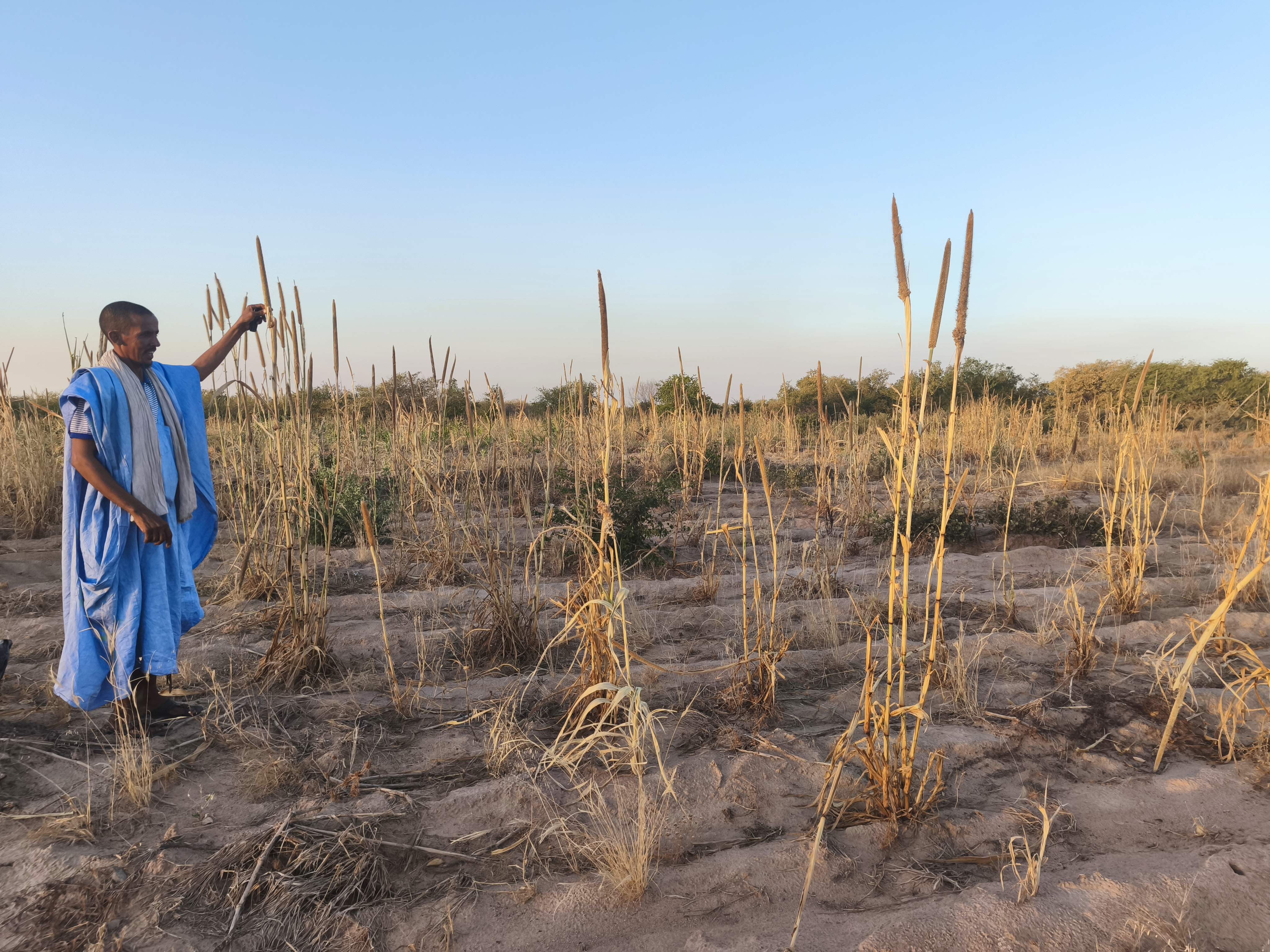
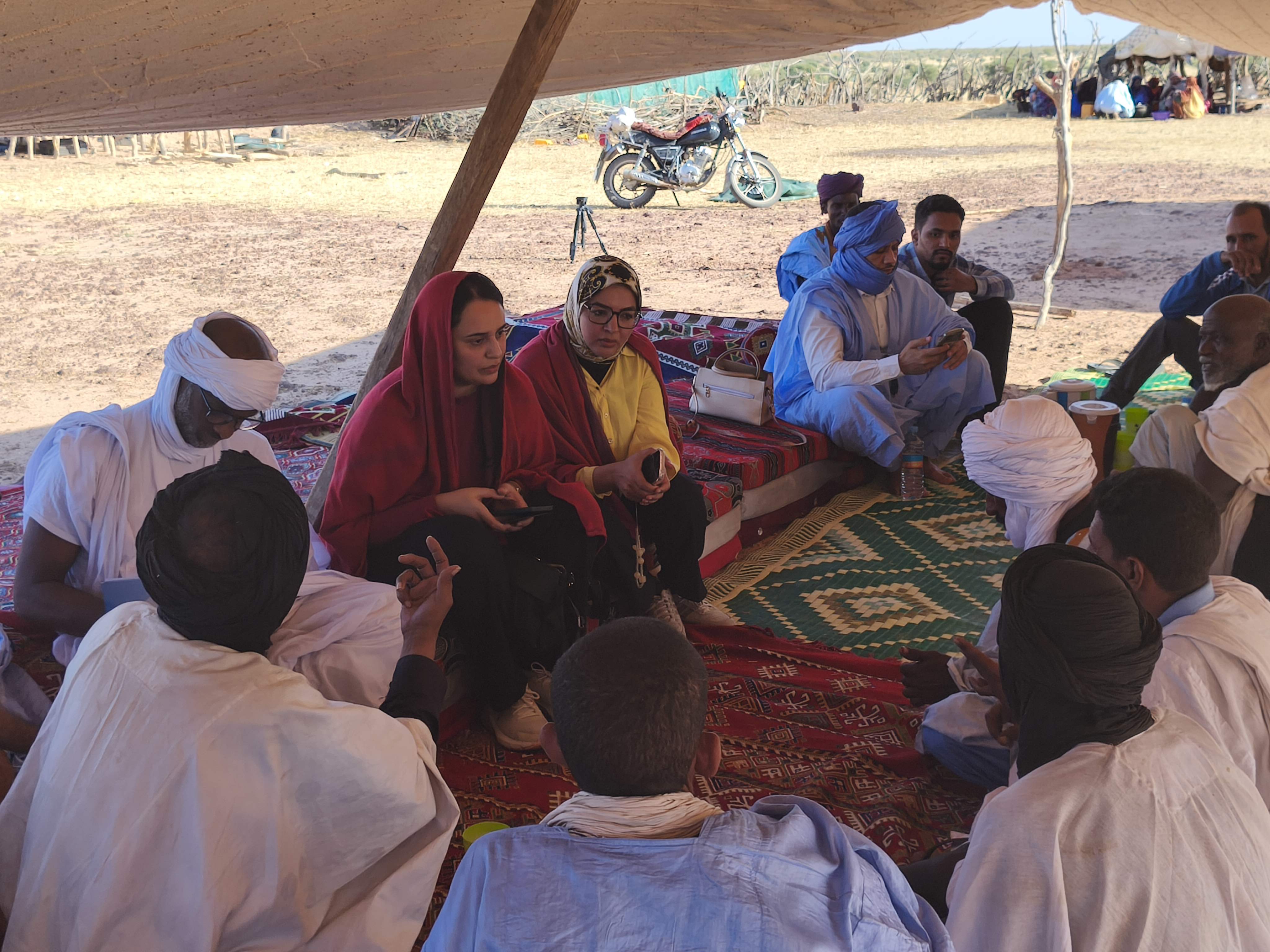

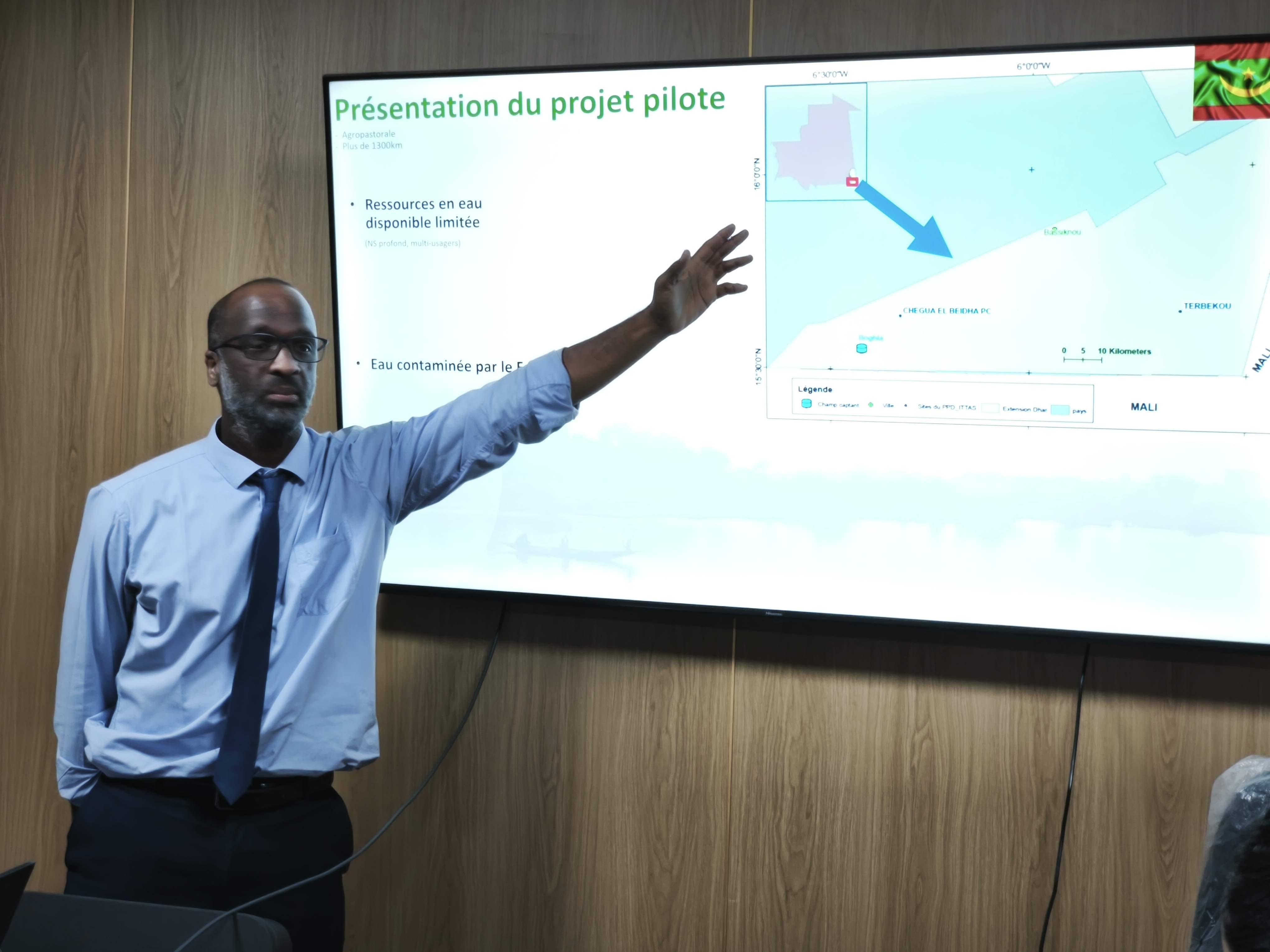
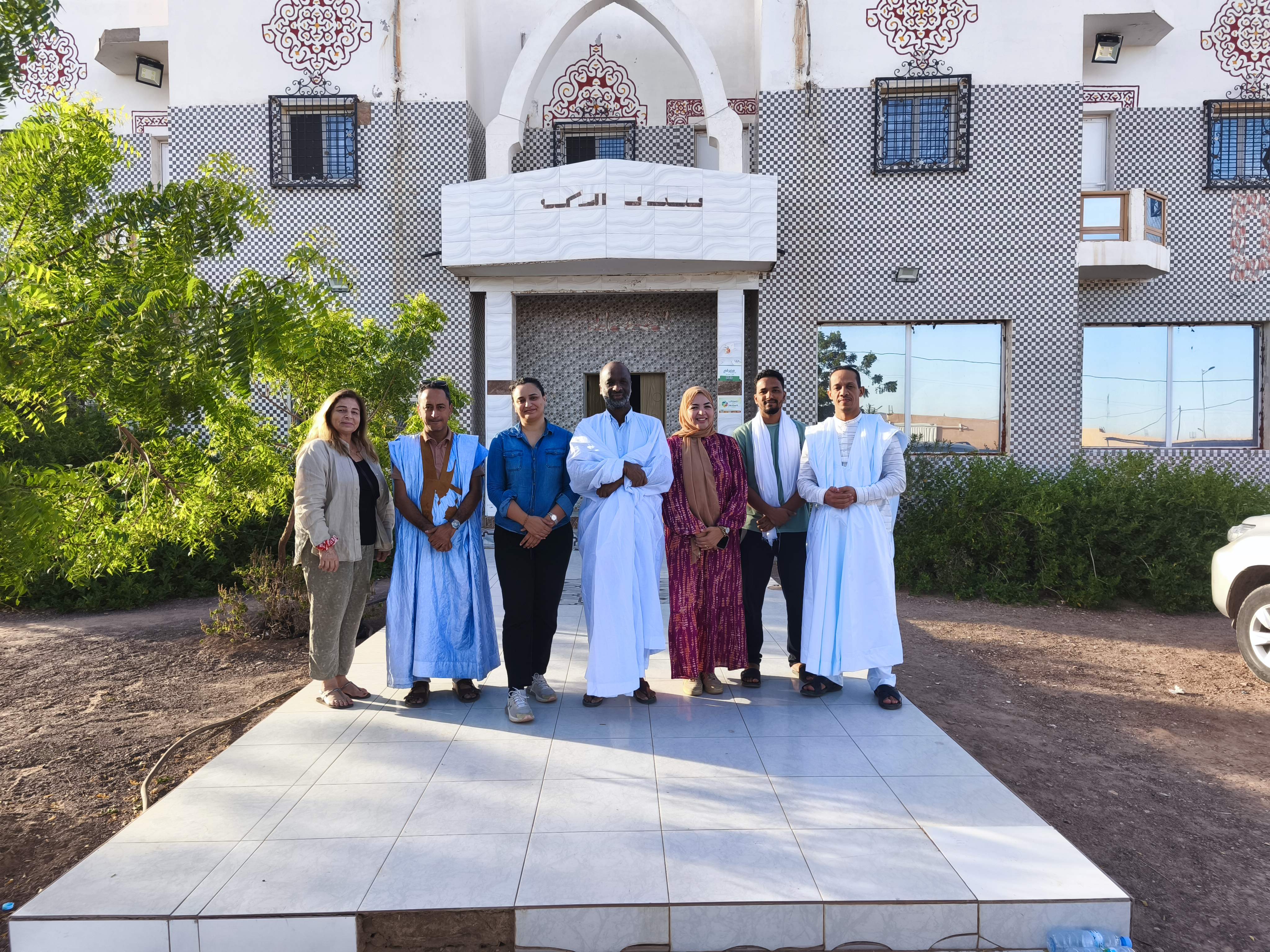

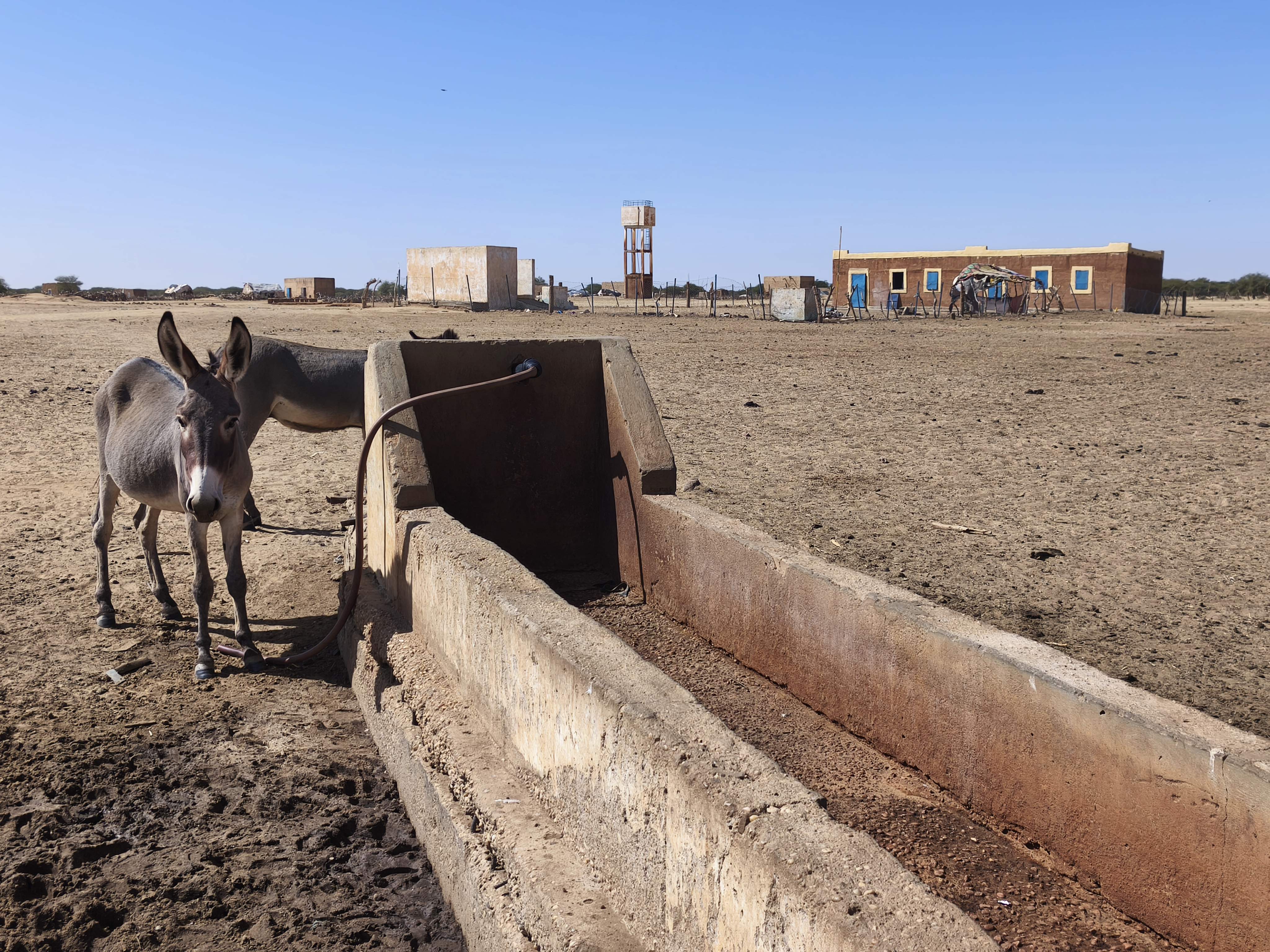
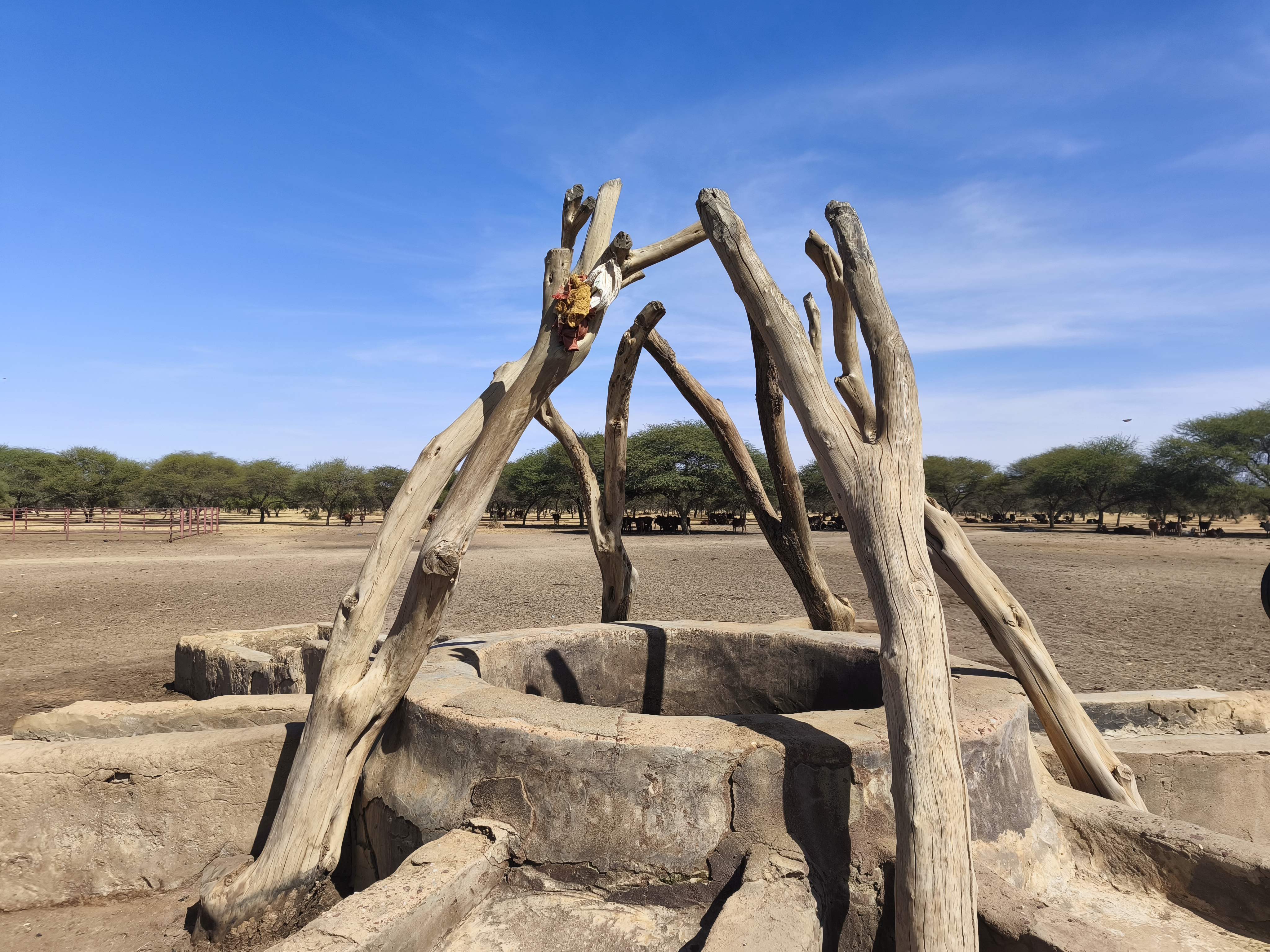
Mauritania, October 27-31, 2025
The Sahara and Sahel Observatory (OSS) conducted a technical supervision mission in Mauritania, visiting the pilot sites of Chegga El Beidha–Baseknou and Terbekou, located in the Néma region within the Dhar Basin. This third supervision mission was carried out under the NB-ITTAS Project, financed by the Global Environment Facility (GEF) through its implementing agencies, UNDP and UNEP, and executed jointly by ABN, OSS, UNESCO, and UNIDO. The visit followed previous monitoring missions and preceded the large-scale implementation phase planned under the Strategic Action Plan adopted in April 2025.
The mission aimed to assess the technical progress of the pilot project, evaluate the quality of the works completed, and document field observations. It also sought to capitalize on achievements, identify good practices, and formulate recommendations to ensure the sustainability and replication of successful interventions. The areas visited are home to agro-sylvo-pastoral communities that are highly vulnerable to the impacts of climate change. These populations face increasing pressure on natural resources, particularly due to growing water demand linked to large livestock herds, the presence of refugee camps, and increasingly variable rainfall. In this context, the NB-ITTAS Project provides tangible solutions to improve access to water and enhance the resilience of local populations.
During the mission, the joint OSS–CNRE team observed significant progress, particularly in Chegga El Beidha, a village located more than 1,400 kilometers from Nouakchott near the Mauritania–Mali border. The existing 100-meter-deep well is no longer sufficient to meet the needs of the population and herders, creating tensions as villagers lack the means to extract water manually while herders use their livestock to draw it. The pressure is particularly high, as the well provides water for approximately 1,200 camels per day, leaving households with limited access. To address this situation, the project is drilling a 130-meter-deep solar-powered borehole. At the time of the mission, a depth of 105 meters had already been reached. This initiative contributes to the sustainable use of the Dhar aquifer, the area’s main water resource, directly benefiting around sixty families.
In parallel, greenhouse farming plots irrigated through groundwater-fed drip systems have been completed, including equipment installation, fencing, and land preparation. Once the new borehole becomes operational, it will supply the irrigation network, ensuring reliable and secure access to water. These infrastructures are helping reduce villagers’ dependence on herders, who were previously the only ones able to draw water manually using camels.
At Terbekou, works are still ongoing. The main challenge identified concerns the high iron concentration in the available water, which negatively affects both public health and agricultural productivity. The local population has expressed strong expectations for the project, particularly regarding the planned installation of a community-based iron removal system. This intervention is considered a priority, as it will ensure access to safer drinking water and sustainably improve living conditions.
The mission confirmed the relevance and effectiveness of the actions undertaken and helped define the technical and organizational steps required to complete the pilot project. It also laid the groundwork for the capitalization and scaling-up phase of the NB-ITTAS Project in Mauritania, marking a decisive milestone toward promoting sustainable, integrated water resource management and climate change adaptation in the Dhar Basin of Néma.